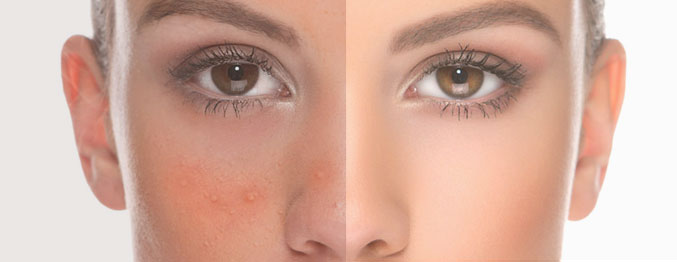

Rosacea is a common skin disease that causes redness and visible blood vessels on the cheeks and nose and may spread even to forehead and chin. The chest, back and ears can also get affected and stay red all the time.
Rosacea is a condition where a person’s skin tends to get blush and flush more easily as compared to other people. The disease may be mistaken for sunburn or rosy cheeks. Untreated Rosacea can worsen over the time.
Rosacea can occur in anyone but it occurs mostly in middle-aged women with fair skin. Though the disease is incurable, it can be controlled and manageable with medical treatments.
Causes of Rosacea
The exact factors causing rosacea are still unknown but it can be possibly caused due to environmental factors or abnormality in the blood vessels of the face. A number of other factors have also been identified that can indirectly trigger rosacea and increase the blood flow to surface of the skin.
Signs and Symptoms
Signs and symptoms of Rosacea may include:
Types of Rosacea
Rosacea can be categorized into four types:
Diagnosis
There is no clinical test as such to diagnose rosacea among patients. The doctor can diagnose it by seeing the skin of patient and knowing about its symptoms and triggers. Early and timely diagnose of the disease may help in reducing the risk of rosacea progression to a significant extent.
Treatment of Rosacea
There is no treatment to cure Rosacea. However, the disease can be controlled and its impact can be reduced with various medical treatments and changes in lifestyle. Topical medications and oral antibiotics can help in reducing the inflammation and redness of affected area.
Laser Treatment can also be performed on the patients with visible blood vessels. The intense pulsed light can help these blood vessels to shrink. The laser treatment should be done by an expert dermatologist for effective results.
In the extreme cases, where the patient suffering from Rosacea develops puffy cheeks and a bulbous enlarged red nose, plastic surgery can also be performed to remove the excess tissue.
F
o
r
A
p
p
o
i
n
t
m
e
n
t
